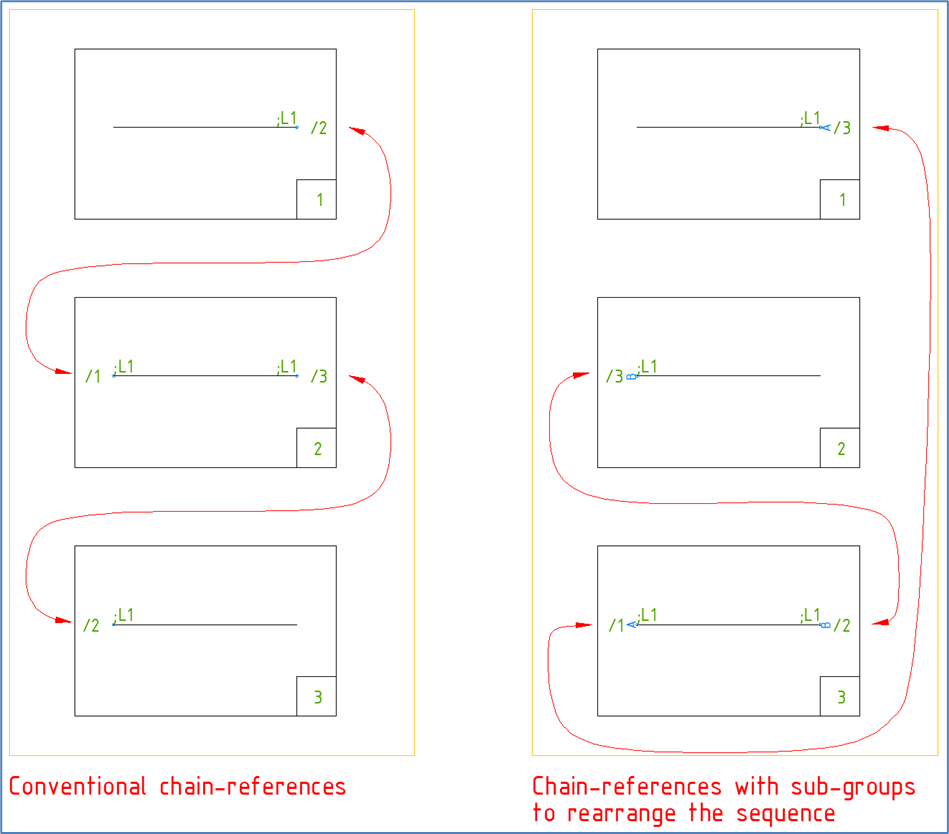|
<< Click to Display Table of Contents >> Sub-groups |
  
|
|
<< Click to Display Table of Contents >> Sub-groups |
  
|
When using a conventional way of drawing, without so-called “forced connections”, potential references will not in any way affect the wiring sequence. The way that devices are physically wired will not be affected in any other way than defining if they are connected at all. In a chain reference, the potential reference symbols will refer to each other in a chain from lower sheet numbers to higher ones.
If you for some reason would like the reference chain to have another sequence, you may achieve that using so-called “sub-groups”, which is shown in the figure below.

Figure 820: Conventional chain-references to the left and ones that are controlled by sub-groups to the right
In the Potential reference Dialogue box, you will find a field for a so-called Sub-group.
Sub-groups may be used to control referencing within a potential. Two potential reference symbols with the same potential name and the same sub-group, will refer to one another, while two that have different sub-groups will not.
By pairing all potential reference symbols within a potential in sub-groups of two, you can achieve any sequence that you want.
You can name sub-groups any way you like. The only thing that is important, is that both ends of a reference must have identical sub-groups. In the example in the figure above, the sub-groups have been named A and B, but any other names would also do fine.
The sub-group names are placed in the index layer. They will therefore not be visible in the final documentation, like in PDF files.